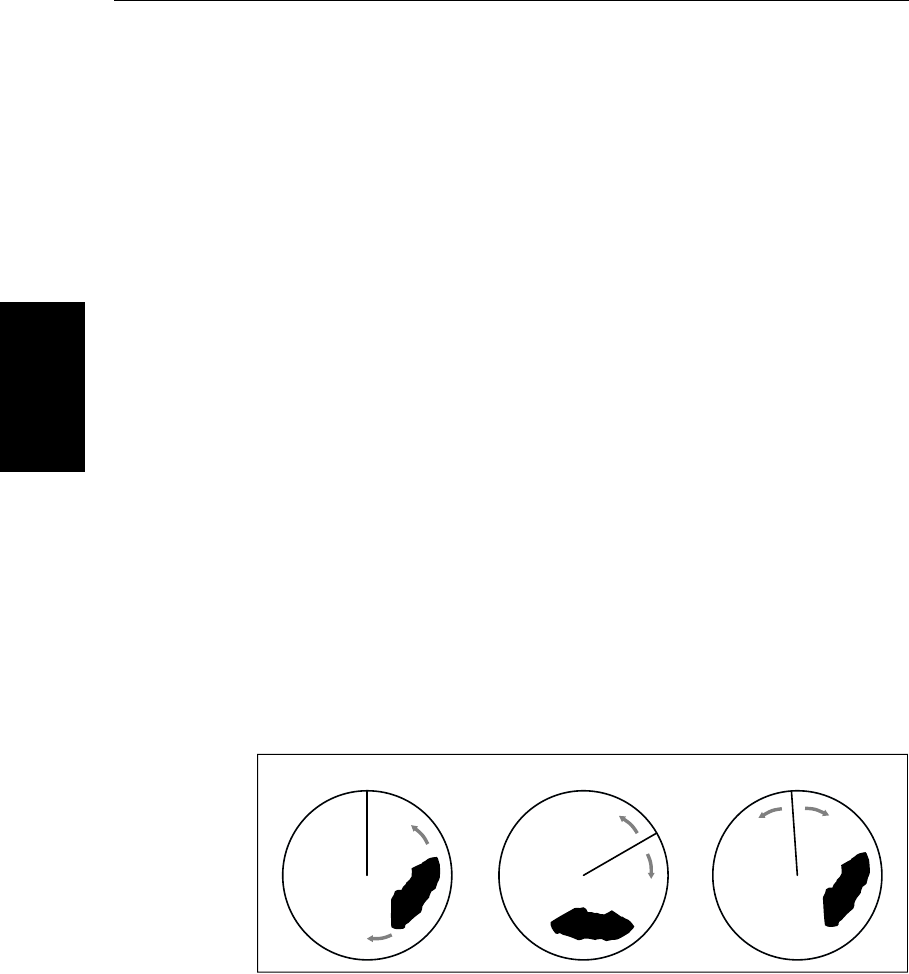
4-2
hsb
2
PLUS Series LCD Display
Changing the
Heading Mode
4.2 Changing the Heading Mode
The radar picture is normally shown with your vessel’s dead ahead bearing
straight up, as indicated by the Ship’s Heading Marker at 0° relative bearing.
This is the Head Up orientation.
If heading information is available via a SeaTalk or NMEA connection, you
can choose a different heading mode. In Course Up and North Up mode you
can also select relative or true motion.
True and Relative Motion
Relative motion is the default for the radar display. In relative motion your
own ship’s position remains fixed on the radar screen and all radar targets
move relative to your own ship.
In true motion, fixed radar targets maintain a constant position on the screen,
whilst your own ship moves across the radar image at the appropriate speed
and heading. A map-like image is thus displayed, with all moving vessels
travelling in true perspective to each other and to fixed land masses.
As your ship’s position approaches the edge of the screen, the radar display is
automatically reset to reveal the area ahead of your ship. You can manually
reset your ship’s position at any time by pressing the
TRUE REL soft key twice.
Heading Modes
The heading modes are as follows:
Figure 4-1: Radar Heading Modes
• Head Up: The radar picture is displayed with the vessel’s current heading
upwards. As the heading changes the picture will rotate.
• North Up: The radar picture is stabilized and displayed with north
upwards. As you change heading, the ship’s heading marker moves.
• Course Up: The radar picture is stabilized and displayed with the cur-
rently selected course upwards. As you change heading, the ship’s heading
marker moves. If you select a new course, the picture resets to display the
new course upwards.
D3988-1
Head Up
North Up Course Up
81186_2.book Page 2 Monday, December 17, 2001 8:35 AM


















